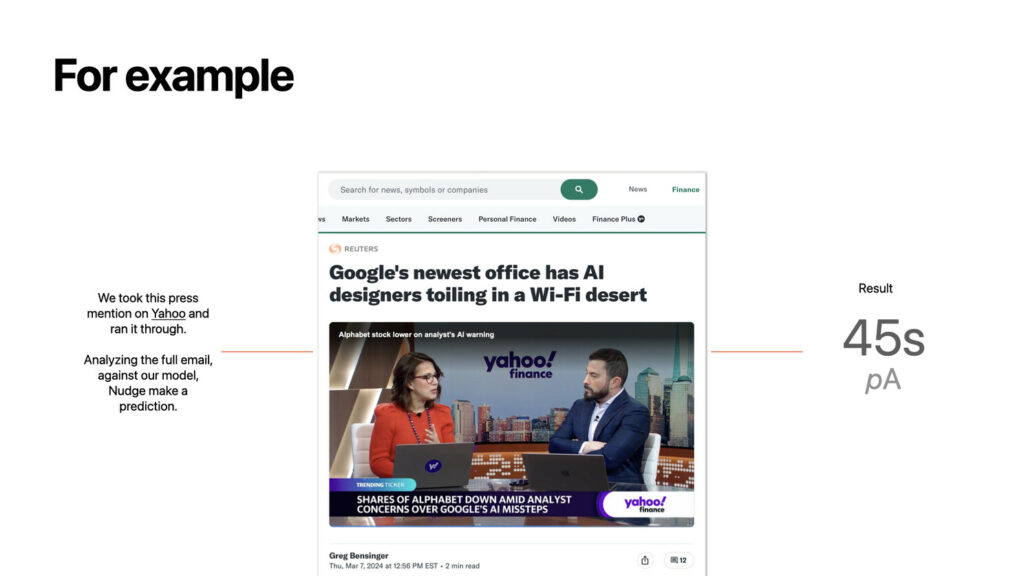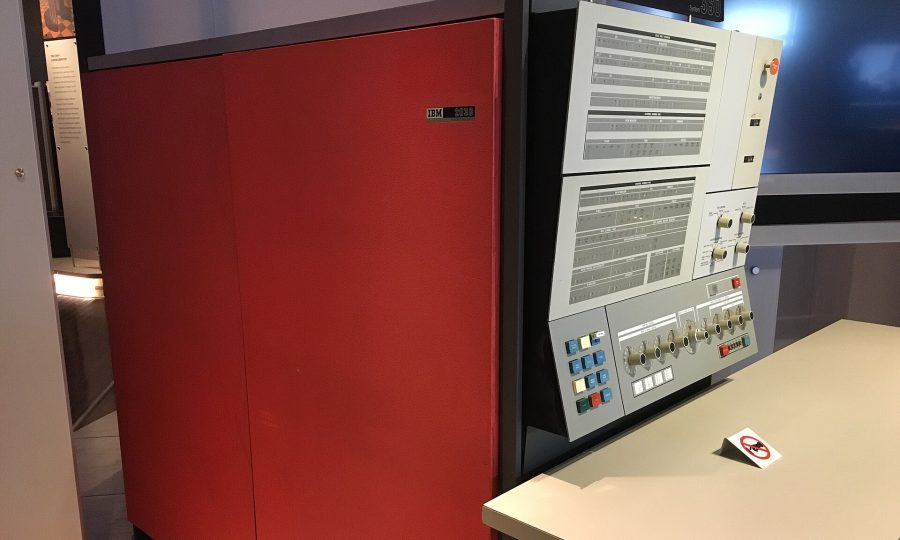Imagine a great press write up? But no one’s reading it?! Measuring what matters most, the rise of attention metrics in earned media. PR metrics have languished behind other parts of the media mix, which is why now is a right time to bring new metrics in, to help show how well they do. This post dives into how attention metrics show the impact & ROI of earned media.
If an ad gets 2 seconds of attention (which in some cases is generous!) earned media which is getting 20-30x more attention has a place too. Which is my many PR professionals are seeking attention metrics. To remind communication leaders the valuable role that it plays.
Let us show you how we do it at Nudge.
How attention metrics work
This is a solution we have developed over time, the idea is to bring attention metrics to earned media. Attention on the press release and the actual write ups. To show the impact of earned media. How much is it worth if no one reads it?
An example of the output:

In this example a write up on Google has garnered 45 seconds of attention. This is arrived at through a Machine Learning model. Machine learning models help rapidly analyze large amounts of data to learn about their behaviors. Then to take those learnings and apply them cases where you have less data. In this case, earned media.
How they do that is by analyzing and breaking any mention into its components. Our attention model is based on real world data. Which is continuously updated. Because also, what people pay attention to changes over time.
The analogy is, it’s like a real-time stock analysis, crunching all the data out there and finding what is working out there in the market with consumers and helping show how your comms work performs.
Now that attention datapoint alone is valuable, now you have tactile feedback on how well it resonated with the target market.
Providing further context can be the performance of other mentions, or to compare against the benchmark. Here it is, but compared against the benchmark.

Oh, so it’s 29% below the Benchmark. What can we do to improve it?
That’s where we can also dig into the why, why did any particular piece do so well, or not. Could the headline have been improved? Would additional quotes had more impact? Sometimes the disclaimers themselves take up too much of the mention.
This all leads to improving the ROI of earned media, if we can squeeze more out, by being smarter about our comms, which lead to better quality write ups that have more impact. Who doesn’t want that?
Case study
In this case, the clients objective was to promote the best press mentions, to have the most impact. To really capitalize on the value of a good write up.
So they wanted to understand the impact of 20 or so press mentions, across different geographical outlets. Their strategy was to go and buy ads, promoting the best write ups. This combination enables them to maximize the impact from these positive mentions. The missing part of the puzzle was, which press mentions and why?
Nudge came in, to analyze and sort the press mentions by the amount of attention they had. The results rangedfrom 2 seconds to 54 seconds.
Armed with this analysis the client was then able to allocate their budget to the best performers from day one. In turn delivering on their objective of driving the most impact from positive mentions.
In turn they avoided wasting money on poor performing mentions. And gained intel for future activity.
This is the mantra of attention measurement, it helps bring the learnings from prior work, to upfront. So each campaign gets a leg on performance up at the start.
Comparing to traditional metrics
This piece really is about shifting from impressions to impact. Speaking with professionals, they want to know the reach of their campaigns.
- Estimated reach
- Engagement, in this case, attention
Attention is a signifier of quality, more attention means quality engagement. So these metrics paired together really help to show impact.
Where Attention plays a role in replacing or updating the traditional metrics, is social engagement. Social media metrics have lost their fidelity as behavior has shifted to private messages. So seeing how much attention the audience pays to a piece, helps fill that engagement gap.
Even with social data when it is available, attention brings more context to that. This makes attention an all round win/win for comms leaders.
Definitions and what makes good attention?
How does Nudge define attention?
We define attention, as attention paid to a page as indicated by activity on the page, viewing it, scrolling & being active. It is measured to the second. Attention on a page indicates quality, the end user understands and is engaged with the message.
Generally speaking if you have a professional, you want to be getting 40 seconds or more of attention. If you are getting sub 40 seconds, or even 15/20/30 seconds, there is a disconnect.
On the flipside, even improving a piece 10 seconds can have a big impact, so once identified, changes can be made swiftly.
We recommend clients use Benchmarks to help contextualize performance, and to build their own benchmarks over time, to keep a focus on performance.
Benefits of attention metrics
The main benefits communication leaders are seeing from attention metrics are:
- Measuring campaign impact: Attention metrics provide a direct and understandable metric of how well the campaigns are resonating with their intended audience. Helping understand what’s working and what needs improvement.
- Optimizing message and distribution: By analyzing which types of content and channels drive the most attention, comms leaders can refine their strategy to maximize engagement AND impact.
- Budget allocation and ROI optimization: Attention metrics enable more precise budget allocation, to direct campaign resources towards the most effective campaigns and tactics.
Final thoughts
Attention metrics are the next frontier of PR metrics, enabling comms leaders to drive more impact, and get smarter about their tactics & strategies. After all, what is PR all about, getting attention?
You may also enjoy our piece on LinkedIn we have written more on the topic. Earned Media needs attention, literally.

|
|---|

